Coarse Blue Grits
$ 6.00
Our coarsely ground blue corn grits are milled in a coarse, old-fashioned frontier style. They are whole-grain and ground from domestic (United States) grown organic blue corn. They are stone-ground and milled to order. They are freshly milled then shipped to your door. Our Coarse Blue Grits are also a vegan food. It is also GMO free and gluten-free product.
Experience authentic flavors and discover the nutritional wonders of stone ground blue corn grits. This unique and flavorful food is not only a treat for the adventurous palette, but also a powerhouse of nutrients. Packed with resistant starch, antioxidants, and essential vitamins and minerals, blue corn grits offer a host of health benefits to support your overall well-being. The unique stone grinding process preserves the natural goodness and enhances the flavor of blue corn, resulting in a rich and nutty taste that will have you craving more. Whether you prefer them as a savory side dish, a creamy porridge, or the base for a scrumptious casserole, blue corn grits lend themselves to a variety of delightful culinary creations. Incorporating blue corn grits into your diet not only adds a burst of color to your plate, but also supports your digestive health, boosts your immune system, and provides sustained energy. So why not give your taste buds a delightful experience while nourishing your body with the wholesome benefits of stone ground blue corn grits?
Our blue corn grits contain the same phytonutrients as blueberries. Whole-grains are essential to the gut biome because they are high in resistant starch.
Our organic stone-ground Coarse Blue Grits are ground from organic blue corn and contain nothing else but organic blue corn. These organic coarse blue corn grits are freshly milled to order and shipped to your door! This is a quality that cannot be achieved with store-bought products. Time is of the essence when it comes to freshly-ground corn flavor.
These grits are an interesting and visually striking twist on old-fashioned Southern grits.
This product is also vegan. It is a GMO-free and gluten-free product.
It is a food very high in resistant starch, which is an underappreciated aspect of food in the current nutrition discussions.
Blue corn has a robust and earthy flavor, with a pronounced nuttiness and hints of umami. The superior quality of the blue corn we mill combined with the freshness of the flour takes the flavor of this product to new dimensions.
The same anthocyanins that make blueberries blue give blue corn its distinctive color, so it is also good for you. Anthocyanins are variety of flavonoid polyphenol phytonutrients that are strongly believed to have a number of health benefits. Among these benefits are improved brain health, heart health, reduced risk of cancer, reduced inflammation, improved blood sugar control, improved weight management, and improved brain function.
Give it a try in your kitchen for flavor and health!
Here are some instructions on how to cook grits. Generally speaking, 4 parts liquid to 1 part dry grits works perfectly. Stock of your favorite variety (be it vegetable or animal) and any sort of milk or cream are nice, also. A blend of any or all of these liquids works well. And plain old water works fine, of course.
As for myself, I always cook mine with a bit of salt and then add butter to finish. From there you can take grits in more than a few directions, be it as a starchy base for a meal, or even just a healthy whole-grain snack on its own.
Grits can be chilled, then cut and fried in any method. I've been enjoying the air fryer as of late.
A USDA Certified Organic Product.
Want to know more about grits? Read on!
Here is a link to a helpful video how I explain how to cook anyone's stone-ground grits.
I always cook mine with a bit of salt and then add butter to finish. Grits are also delicious with some cheese.
But what are "grits?"
Grits are ground up corn (Zea Mays). They are ground from dry field corn (not the sweet corn you eat on the cob during summertime). Field corn stays in the field until the kernels are dry enough to store without getting moldy (under 15.5% moisture content). Although field corn goes through the "milk stage" that sweet corn is harvested at, it is not sweet. It is instead starchy. Nixtamalized corn used for corn tortillas, tamales, and hominy) is also field corn.
Gerard Paul at manyeats.com wrote a thorough and concise article about corn that covers the topic quite well. Please give it a read here.
"Stone-ground" refers to the mill the corn is ground with. That means the corn was ground on a stone burr mill. Offhand, I can think of four different kinds of mills: stone burr, hammer, roller, and flail. Stone-ground products are ground on a stone burr mill. A stone burr mill is not required to mill grits, but they would not be stone-ground without the stone-burr mill.
"Stone burr" simply means that the grinding part of the mill is made from stone, i.e., rocks (although some manufacturers use synthetic stones in their mills). My mill has stones made of Balfour granite from North Carolina. "Burr" refers to the carvings on the grinding side of the millstones, A flat stone is not as good at grinding as a stone that has been shaped with a pattern to assist in grinding grain (referred to as "grist" by millers). This pattern is referred to as "lands" and "furrows." Lands are the high spots, furrows are the low spots. These shapes interact to cut the grain into uniform sizes.
Millstones may be arranged in a horizontal or vertical fashion. One of the stones called the "runner stone" spins. One stone is stationary, the "bedstone" or "set stone."
Modern stone burr mills are generally powered by electricity, but old-fashioned water-turned mills still count, as do the even more primitive horse-powered mills, or even windmills. For that matter, human turned querns count also. As long as the grinding part of the mill is comprised of stone, the product being milled is stone ground.
To summarize: stone ground grits are corn that has been ground on a stone burr mill.
The Congaree Milling Company is a proud member of the SCSFA.
What is a gristmill? Check out an article I wrote about the topic here.
Check out this list of gristmills compiled by author Amy Halloran (thank you Amy!).
Here is a list of gristmills in South Carolina graciously compiled by SCIWAY.net. A very special thanks to Kerri.
We attend several farmer's markets in out local area: The Blythewood Farmer's Market, and the Richland County Public Library's Farmer's Market. Come visit us at the Farmer's Market!
We are also pleased to announce that Fundacion Tortilla was kind enough to include us in their directory of all things related to corn and nixtamal. Their primary focus is to preserve the diversity of indigenous corn culture. We are proud to be their allies.

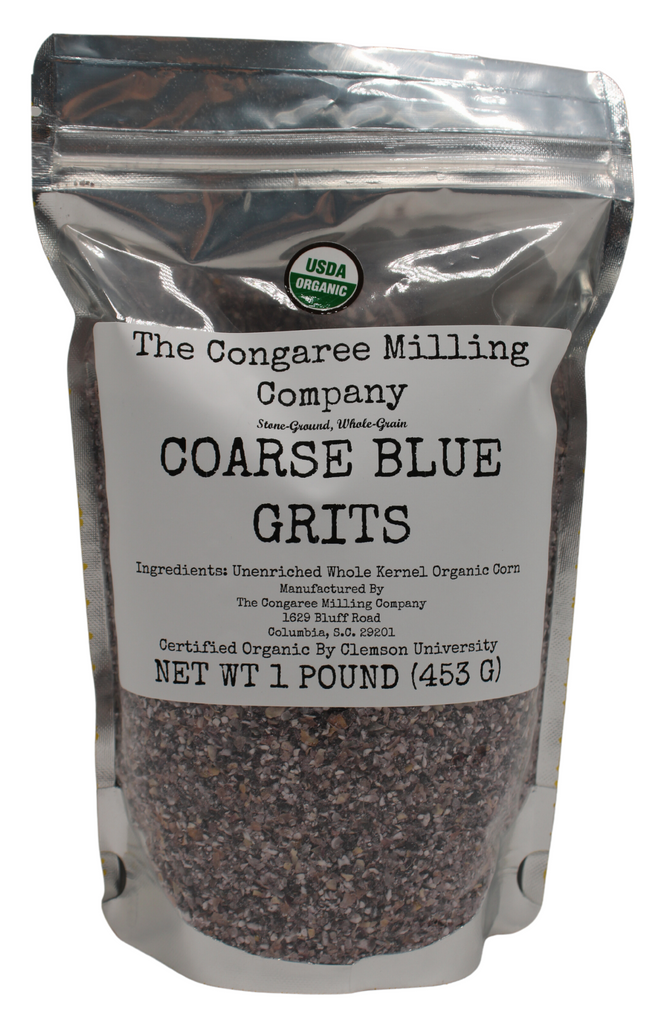
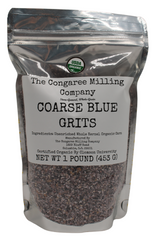
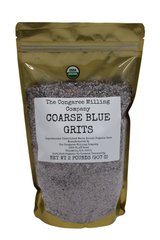

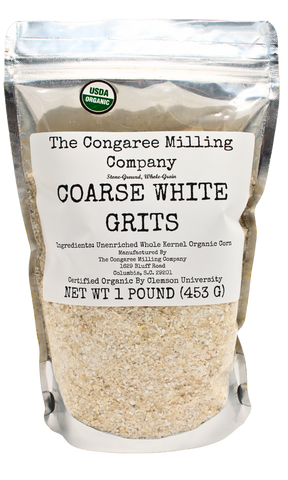
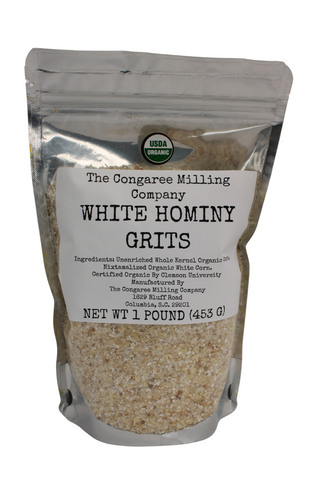
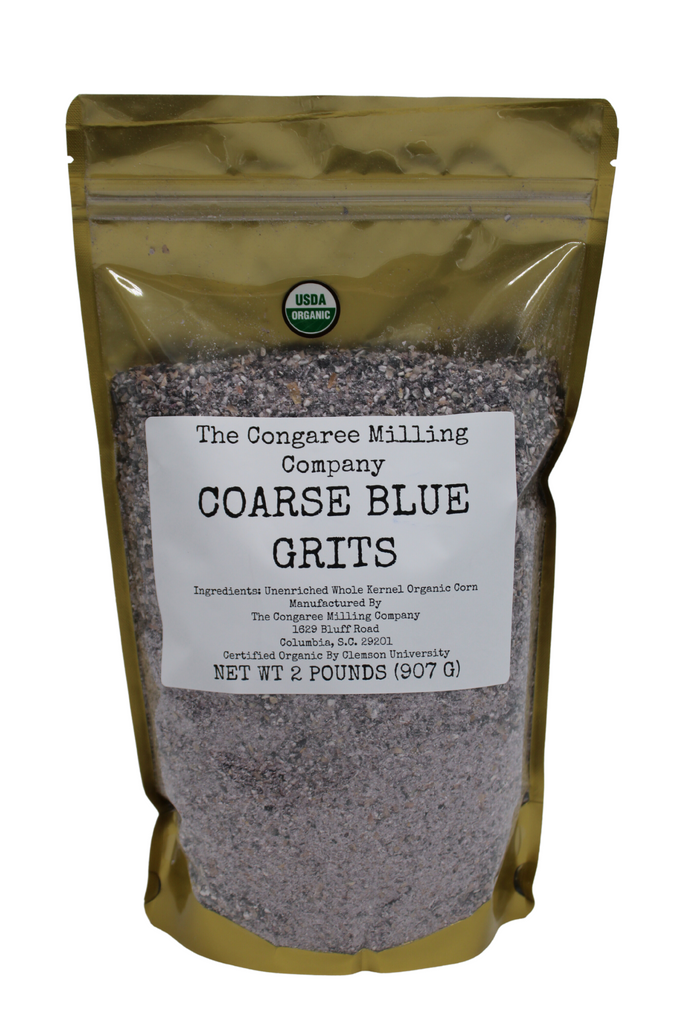
Share this item: